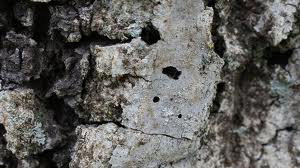
Some readers have discounted on our website the importance of the discovery of the Goldspotted oak borer in Idyllwild, noting that other pests or birds would take care of it and eliminate the problem. Those readers have not seen the devastation in San Diego County where more than $8 million in public and private funds have been spent or lost on oak borer mitigation activities, including dead tree removals and infested wood disposal.
Ninety thousand dead oaks, killed off since the Goldspotted oak borer was discovered in 2004 in San Diego County, is no small problem. And the reason it is a problem is that there are no natural predators for it in California. It is a non-native pest transported here in firewood from southeastern Arizona where there are natural predators that keep it in check. Were this insect to spread throughout California, mitigation costs would be enormous and property values would be greatly reduced.

In San Diego County, much of the die-off has occurred on Forest Service land. Dr. Tom Coleman, Forest Service entomologist and Goldspotted oak borer expert, has spent the years since its identification studying the beetle’s patterns and investigating ways to combat it, either through topical applications, importation of a predator or other means to stop spread. Still, at this point in time, there are no existing effective treatments or approaches to stop die off.
Anabele Cornejo, assistant public affairs officer of the USDA Forest Service, Cleveland National Forest in San Diego, said, “At the California state level, a quarantine must be initiated by request from a county agricultural commissioner to the California Department of Food and Agriculture. To date, no county commissioners have made such a request, but rather they have expressed concern about a potential quarantine’s effectiveness, cost, logistical difficulties, and potential to draw away existing resources currently combating other invasive pest that threaten agricultural commodities.”

Cornejo said the extent of action to date in San Diego is the establishment of a committee to deal with eradication and containment issues. “In San Diego County, federal, state, county and city officials, working with the University of California, established a Goldspotted oak borer Steering Committee for a comprehensive cooperative approach to learning more about this invasive pest as well as how to confine, control and eradicate it.”
Cornejo also noted lack of funding is an impediment to erecting signs around infested Forest Service lands warning against transportation of firewood out of the infested zone. “Due to tight budgets, agencies cannot afford to rent billboard space,” she said.
Asked whether the Forest Service would continue to issue wood cutting permits in the GSOB zone of infestation, Cornejo said, “The Cleveland National Forest’s Descanso Ranger District has continued to issue wood permits to the public. Permitees are shown on a map specific areas where they can collect wood legally. The areas where trees have been down for two or more years and are not infested with GSOB. The inspection [of those areas] is done by either Dr. Tom Coleman or the Descanso District Lands Officer, Russ LaJoie.”
When asked what is being done with wood from infested trees (the oak borer can live in firewood for up to two years), Cornejo said, “Some trees are left where downed and used as habitat for area animals. Hazardous trees are downed and are allowed to sit for two years and then allowed to be used for firewood.”













